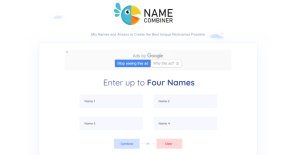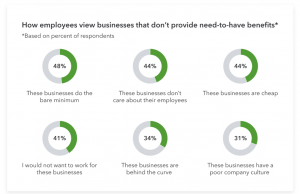
It is needless to say that an online shopper is different from an offline shopper in various ways. As an online marketer, it is vital that you are aware of what makes online customers different from offline customers, and how to cater to them.
Similar to the general stages of needs of a human being, online customers may also have specific needs that need to be addressed in order to serve them effectively.
Online Customers’ Needs
Basic Needs
The basic needs of an online customer are the foremost, functional components that they come across when they land on your site to shop.
Do not let your customer get the same impression as walking into a disorganised, undecorated, uninviting retail store, when they first land on your online shopping site. According to industry statistics, 48% respondents of a study stated that the website design is the primary criterion that they use to decide the credibility of a business. In a research by US-based digital marketing and strategy agency Oneupweb, which studied influential factors in purchasing decisions, 76.5% of the respondents stated that the appearance of credibility and trustworthiness helps them in making a decision. These statistics are self-explanatory for the fact that, what your website looks like is vital for the success of your online business. In a study done by Google regarding the aesthetic judgment of a website, it was found that high visual complexity lead to a more negative first impression of the website compared to low or medium complexity.
Therefore, reduce the complexity of your web pages. Make them more user-friendly by using the space generously. Do not overwhelm your web pages with text content, images, offers, promotions and other such content. Make your web layout organised and pleasing to the eyes of the customer.
In order to increase the trustworthiness of the site at a first glance, include security logos and social proof on your website. This also falls under the second category of the needs of your consumers. Therefore, it will be discussed more in depth in the next section.
Safety needs
In a physical retail store, a customer can examine the products he/she needs to buy and make a purchasing decision. However, it is not the same when shopping online. Once your site visitors get past the first impression of the impressive and inviting website, they will be searching for evidence to increase the trust, in order to continue shopping with you. There are various measures that you can take to establish trust and a sense of security in your customer. Including security badges and endorsements is a type of social proof that will increase the credibility of your site. An A/B testing report on GetElastic on how security badges perform in increasing sales determined that adding security badges at checkout can increase sales by up to 4-6%. Apart from website security logos such as 3D Secure, Visa Checkout and McAfee Security, you can also add badges for media recognition, accreditation and excellence awards.
Another important evidence an online customer needs is testimonials and customer reviews. The Oneupweb research shows that 40.9% of respondents consider onsite customer reviews and testimonials to be an influential factor in making a decision. Results of the 2013 Local Consumer Review Survey by BrightLocal, an SEO tool specialist, showed that 79% of consumers trust online reviews as much as personal recommendations when shopping online. Eight-five percent also stated that they read online reviews of local businesses and 73% believe that positive reviews make them trust the business more. This clearly shows how important it is to include testimonials and customer reviews on your website.
You can strengthen the credibility of your store by including social connections such as Facebook, Twitter and Google+ on your website, so that your customers can use them for further recommendations. Once customers are convinced of the credibility of your website and proceed to become loyal customers, they may even become brand advocates and recommend you to other potential customers on your website and social media sites.
Personalisation
The ability to personalise a webpage to cater to an individual customer is an advantage online selling has over physical retail stores. After you establish trust and security among your customers and they proceed to purchase from you, make them feel special with personalised content. The DigitasLBi Connected Commerce Survey 2015 on global consumers found that 34% of those who normally log in to shop online were interested in receiving personalised marketing and promotional offers. Furthermore, 76% of the consumers who log in to an ecommerce website to have personalised offers said that they buy more products and 78% said they buy more frequently. Reinforce this behaviour in your customers by personalising the catalogue according to their most frequent searches and purchases. Introduce personal, timely and relevant promotional offers based on their previous purchasing habits, geographical location and other such factors. Connect to them via personalised emails so that they are updated on the latest products and offers, which will encourage them to buy more.
Loyalty
Personalisation is often used as a strategy to increase the frequency of sales by a certain customer. Once he/she becomes a frequent customer, you need to take a step further to keep him/her coming back to you with loyalty programmes. Using customer loyalty programmes can be effective regardless of whether it is for an online or offline business. A loyal customer is a brand advocate; hence, an asset to your online business. Effective loyalty programme strategies such as point-based, tier-based and coalition programmes can be used to increase revenue in your business. According to The Loyalty Report 2014 by Bond Brand Loyalty, 29% of customers in its loyalty programme stated that they would not be loyal to a brand if not for the loyalty programme. Sixty-percent of Millennials in this study stated they were willing to switch brands if they would gain more benefits. Make your brand the most preferred one for your customers and you will be able to retain them for a long time. This is important, because it is five times more costly to acquire a new customer than to retain current ones (Forrester Research).
Other Factors to Consider
Apart from the stages of needs of an online customer, there are certain important factors that you need to consider when selling online.
Location
When opening up a physical retail store, the strategic placement of the store is important to increase footfall. One may think as an online store exists on the web, the location will not make an impact on the traffic that the site receives. However, you need to take your target audience’s location into consideration when trying to promote your online selling platform. If you are catering to shoppers in a particular region, market yourself as a platform for that region. It can also help if you’re in close proximity. Moreover, an important part of selling online is order fulfillment. Depending on where a selling platform’s products are located, the shipping availability can differ. This can have an impact on the traffic to the site. Not all sellers ship their products globally. But, cross-border commerce is a vital component in online selling. According to PayPal Cross Border research 2014, 49% of online shoppers in the UAE, 28% in the USA and 38% in the UK claim to make cross-border purchases. Therefore, while you choose a shipping strategy that suits your business such as free domestic shipping, get a few courier companies on board and enable cross-border shipping.
Localisation
The above study also shows how customers from different regions prefer to purchase specific products from other countries. For instance, the most-popular cross border purchases of the Middle East region are clothing/footwear (47%), consumer electronics (34%), travel/transport (28%) and toys/hobbies (27%).
This directs you to another important marketing strategy that can increase the revenue. When you are selling to a culturally diverse audience, localise the products and services in a manner that is relatable to them.
Mobile shopping
The device that your customers use to shop is also an important factor for online shopping. Mobile shopping is becoming increasingly popular in e-commerce. Smartphones are now playing an important role in consumer and business relationships as 48% smartphone users have used their mobiles to search and 33% of consumers have made purchases through mobile phones, according to the Connected Commerce 2015 study. Make your website mobile friendly and include security measures and hassle-free navigation via mobile.
(71)








